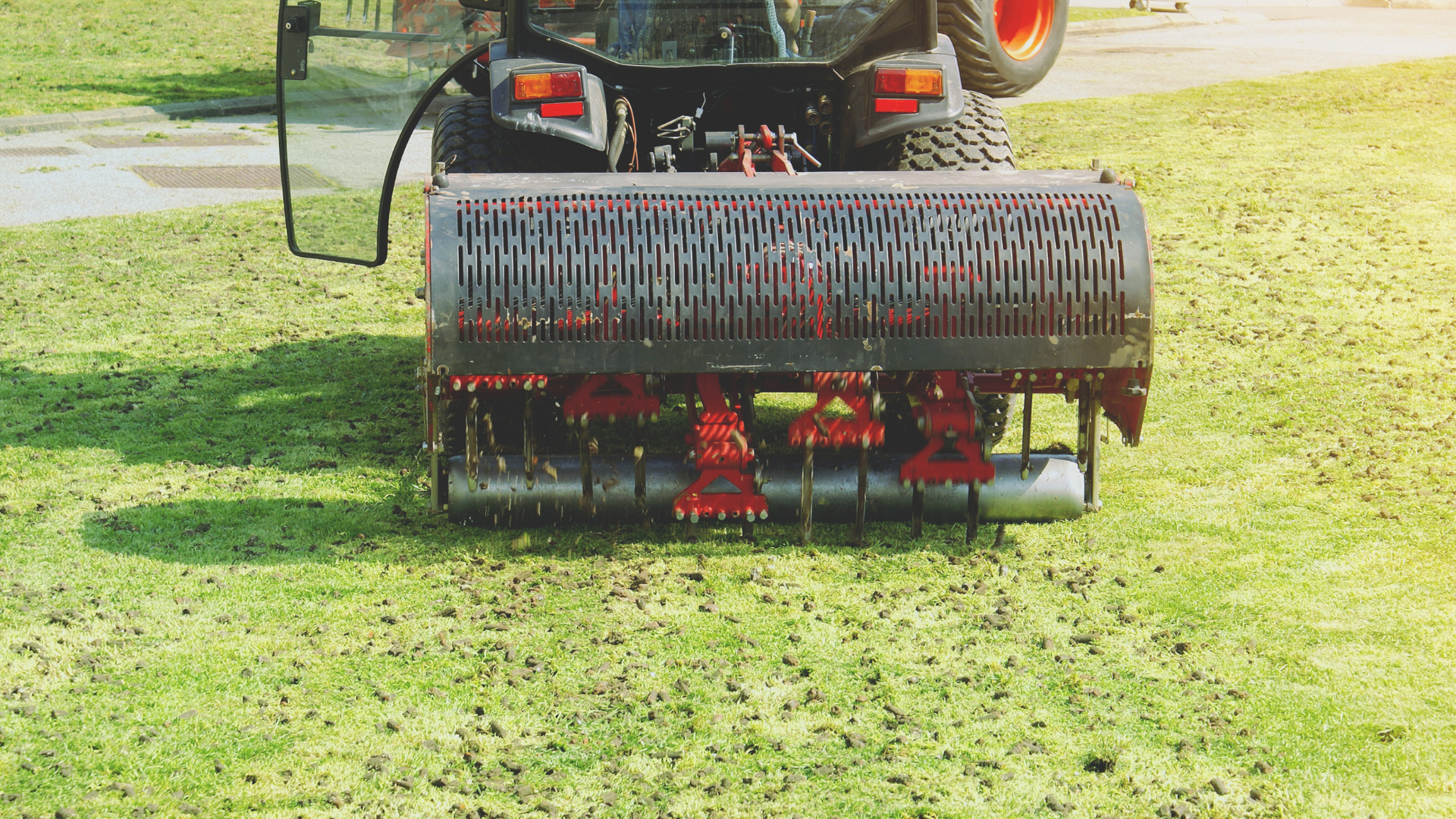Aeration for Lawn Health

A lush, green lawn is the pride of many homeowners, but achieving and maintaining one requires more than regular mowing and watering. Aeration, often an overlooked aspect of lawn care, plays a crucial role in promoting a healthy and vibrant lawn. In this article, we'll explore the importance of aeration and why it matters for the overall health of your lawn.
What Is Lawn Aeration?
Aeration is the process of perforating the soil with small holes to allow air, water, and nutrients to penetrate deep into the root zone of the grass. It is typically done using specialized equipment known as lawn aerators, which can be manual, tow-behind, or powered machines.
Why Does Aeration Matter?
Improved Air Circulation: Aeration facilitates better air exchange between the soil and the atmosphere. This is essential for root respiration and overall grass health. Improved air circulation also helps prevent soil compaction. Enhanced Water Absorption: Aerating your lawn allows water to penetrate the soil more effectively. This helps prevent water runoff and encourages deep root growth, making your lawn more resilient during dry periods. Nutrient Uptake: The small holes created during aeration allow essential nutrients, such as nitrogen, phosphorus, and potassium, to reach the root zone where they are needed. This leads to healthier and greener grass. Reduced Thatch Buildup: Thatch is a layer of dead grass, roots, and organic matter that accumulates on the soil's surface. Aeration helps break down thatch by introducing beneficial microorganisms that decompose it naturally. Preventing Soil Compaction: Over time, soil can become compacted due to heavy foot traffic, lawn equipment, or even rain. Compacted soil restricts root growth and prevents water infiltration. Aeration helps alleviate soil compaction.
When Should You Aerate Your Lawn?
The timing of lawn aeration depends on your grass type and local climate. In general, the best times to aerate are during the grass's peak growing seasons: Cool-season grasses (e.g., Kentucky bluegrass, fescue): Spring or early fall is ideal for aeration. Warm-season grasses (e.g., Bermuda, zoysia): Late spring or early summer is the best time to aerate.
Aeration Techniques and Equipment
Aeration can be performed using various methods: Core Aeration: This is the most common method, where small plugs or cores of soil are extracted from the lawn. Core aeration is particularly effective for addressing soil compaction and thatch buildup. Spike Aeration: Spike aerators use solid tines or spikes to puncture the soil's surface. While less effective than core aeration, spike aeration can still improve soil aeration and water infiltration. Liquid Aeration: Liquid aeration involves applying a liquid solution to the lawn that helps break up compacted soil. It's a less invasive method but may require more frequent applications.
Conclusion
Lawn aeration is not just a recommended practice; it's a fundamental aspect of maintaining a healthy and vibrant lawn. By improving air circulation, water absorption, nutrient uptake, and preventing soil compaction and thatch buildup, aeration plays a crucial role in promoting optimal lawn health. Make aeration a regular part of your lawn care routine, and you'll reap the benefits of a lush and resilient lawn that's the envy of your neighborhood.